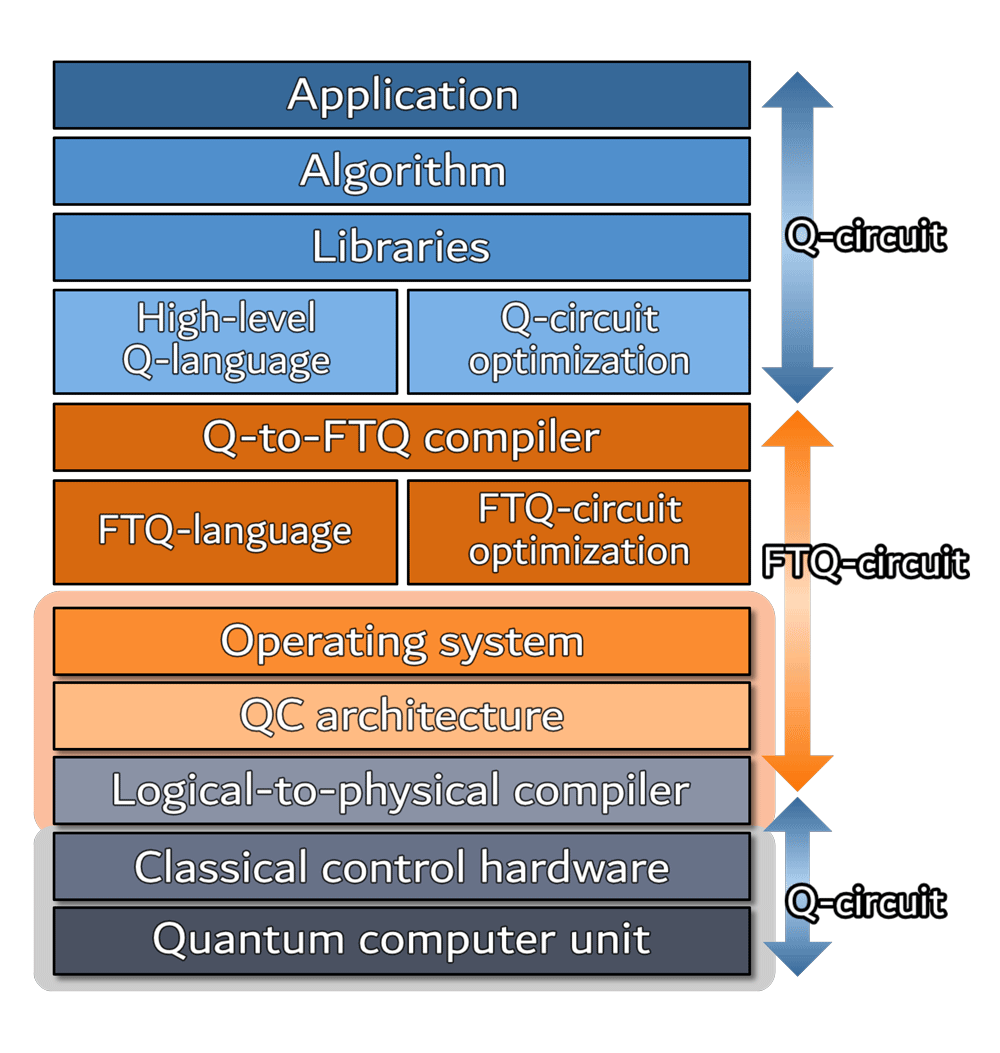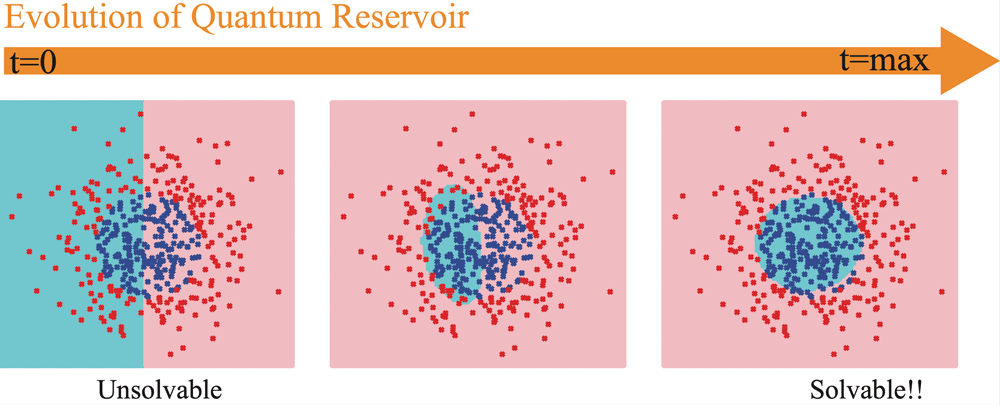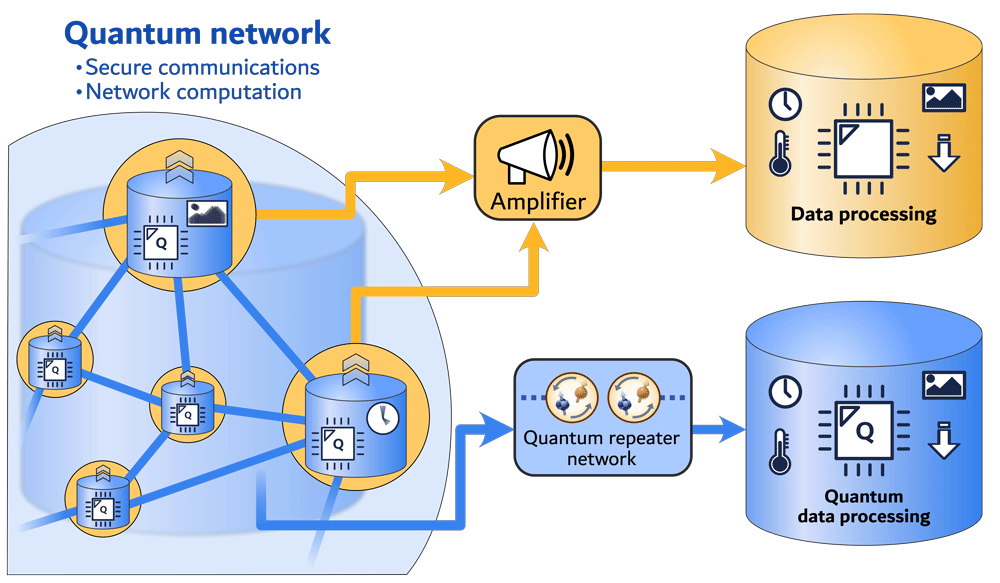Quantum Information Science and Technology Unit (Kae Nemoto)
Introduction
The 1920's saw the development of quantum theory to explain distinctly non-classical (non-Newtonian) physical phenomena. Since then, experimental breakthroughs have greatly increased our control over microscopic systems. Not only has this led to increasingly precise confirmation of quantum physics as our best description of the world at small energy scales, it has also revealed potential practical advantages in the emerging field of quantum technology.
Under this framework, quantum technologies enable an entirely new way of dealing with information, leading to improvements beyond what was possible within the classical formalism. New technologies and devices are starting to be designed to push the limits of computation (quantum computing), to rigorously simulate Nature’s processes (quantum simulation), to allow for secure communication (quantum networks and the quantum internet) and to enhance the precision of physical measurements (quantum sensing). In our unit, we work on various aspects of quantum information science and technology. Throughout the 20th century the quantum world has been expanding, and in this current century that expansion has rapidly accelerated, involving other sciences and engineering.
“Introducing the Quantum Cybersecurity Initiative” by Prof. Kae Nemoto, Quantum Information Science and Technology Unit, OIST.
OIST 10th Anniversary Reception in Tokyo, 25 May 2022.
Research Topics
Quantum Error Correcting Codes
Quantum computers promise a number of distinct advantages over their classical counterparts with the possibility of performing tasks impossible on the later, but one of the major obstacles to their construction has been the fact that quantum bits are extremely sensitive to environmental noise. In order to run a fully-fledged quantum algorithm on a large number of qubits, the computer must be made noise-resilient. This can be achieved through the use of a quantum error correcting code (QECC). A QECC is an encoding of the state of a small number of “logical” qubits into the state of a larger number of physical qubits where the redundancy of this encoding provides a way to detect and correct errors affecting the physical system. In a useful QECC, errors occurring on small numbers of physical qubits are easily rectified, and only errors affecting many physical qubits can modify the encoded information.
The first QECCs were proposed almost thirty years ago and in the three decades since then the field has developed significantly, with modern QECCs having connections not just to quantum computing, but also to topological phases of matter, theories of quantum gravity and even category theory (among other things). Our research here focuses primarily on questions related to the practical implementation of these codes, such as the design of improved decoding algorithms and fault-tolerant methods of manipulating encoded information. We are interested in the tailoring of QECCs to specific hardware architectures and in other questions involving the intersection of architecture design and fault-tolerant quantum computation.

NII CC-BY-SA
Quantum Middleware and Quantum Computer Architecture
Rapid hardware developments in recent years have lead to substantial increases in the size and complexity of quantum information processing systems, making it essential to have methods of handling the entire system efficiently. In fault-tolerant quantum computation, for instance, QECCs typically permit only a small set of fault-tolerantly implementable quantum gates while general quantum circuits are usually defined using a much larger set. Quantum middleware is the technological layer for quantum computer responsible for this connection between the ideal quantum qubits and the fault-tolerant logical qubits. In this technological layer, several steps of optimization and compilation are required. For instance, it is necessary to develop efficient methods for decomposing these general operations into operations from the allowed fault-tolerant set, to solve optimization problems for fault-tolerant quantum circuits, as well as to define intermediate representations for distributed quantum computation.
How would the quantum middleware be connected to the hardware of a fault-tolerant quantum computer? At the interface between “software” and “hardware” of a quantum computer, there is a set of an instruction set architecture and a micro architecture. The instruction set architecture represents how the quantum computer works from the user, and the micro architecture ensures the instructions will be currently translated to control sequences of physical qubits. In fault-tolerant quantum computers, the micro architecture is designed based on the error correction code for the quantum computer, and it is important to choose a quantum error correction code to ensure the feasibility of the architecture.

Quantum Computing on NISQ processors
In the recent years, we have seen the emergence of small-scale quantum processors, the so-called Noisy Intermediate-Scale Quantum (NISQ) processors. NISQ processors are the current state-of-the-art for quantum computers, although the number of qubits in a NISQ processor is limited to the tens to hundreds of qubits. The limited size and accuracy make its practical application seriously difficult. We face two fundamental questions: how can we extract quantum advantages from a NISQ processor? and how can we scale a NISQ processor to a fault-tolerant quantum computer? Our approach to the former question is to design a new computational models and algorithms tailored to NISQ technology itself, while the latter question is addressed in the topic “Quantum Architecture”. A NISQ processor can generate complex quantum dynamics which is already intractable by numerical calculation on a conventional supercomputer, and the key to utilize it as computational power might be in the application-oriented design of NISQ processors. We are currently looking at real-world applications such as classification problems and machine learning.

Quantum Networks
A quantum network is a system of interconnected nodes that enables the distribution of quantum states (information) over large distances and the allocation of quantum resources between networked components. These networks are an essential building block in the implementation of various quantum technologies including distributed quantum computers, quantum sensors and quantum cryptographic protocols. However, the construction of an efficient quantum network is still a daunting task both theoretically and experimentally. The interface between optical qubits and matter qubits are the key component for quantum networks, however it has been proven difficult to realize an efficient interface. There has been extensive research around the world to realize such an interface. We take a theoretical approach to make its implementation more feasible and less demanding while collaborating with experimental groups to realize quantum networks and quantum communication systems.
Quantum networks can be a platform to host various quantum technologies, such as quantum computation, quantum communication, and quantum sensing, however unlike quantum computers, the structure of quantum network and its control are expected to be more irregular and asynchronous in nature. Further, there will be different types of error correction codes required due to the different quantum data types such networks will be to support. Hence quantum data compatibility would be an issue. Future quantum networks are expected to suffer from problems which we have never considered. In our unit we investigate the properties of quantum networks and identify possible fundamental problems for the development of large-scale future quantum networks.

NII CC-BY-SA
Hybrid Quantum Systems
We have reached the stage in our technological development where we have sufficient control over such quantum systems to perform predefined tasks with definite quantum advantage. The properties of those systems are however defined by nature itself, and it is not easy to change them. We already know that no single quantum system possesses all the attributes to undertake any arbitrary task we may want to carry out. Hybrid quantum systems (HQS) are seen as a way to design composite quantum systems with the properties we require. We know that the hybridization of these disparate quantum systems should allow one to design, create and exploit enhanced properties in these systems. Within our unit we have a focus on the exploration of HQS’s with new properties that may be used for novel quantum technologies.



